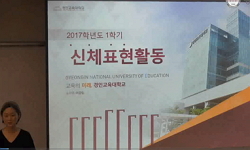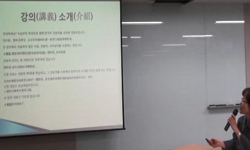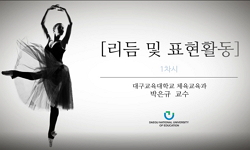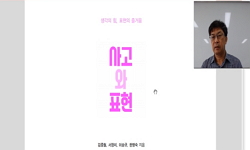Light has an important meaning as an absolute factor to make objects seen in human lives as well as in art history. It helps represent three dimensional spaces and these days, light, which is given a representational value, continues to make a contrib...
http://chineseinput.net/에서 pinyin(병음)방식으로 중국어를 변환할 수 있습니다.
변환된 중국어를 복사하여 사용하시면 됩니다.
- 中文 을 입력하시려면 zhongwen을 입력하시고 space를누르시면됩니다.
- 北京 을 입력하시려면 beijing을 입력하시고 space를 누르시면 됩니다.
https://www.riss.kr/link?id=T8938774
- 저자
-
발행사항
[]: 조선대학교, 2003
- 학위논문사항
-
발행연도
2003
-
작성언어
한국어
- 주제어
-
KDC
654.000
-
발행국(도시)
대한민국
-
형태사항
vi, 69 p..
-
소장기관
-
0
상세조회 -
0
다운로드
부가정보
다국어 초록 (Multilingual Abstract)
Light has an important meaning as an absolute factor to make objects seen in human lives as well as in art history. It helps represent three dimensional spaces and these days, light, which is given a representational value, continues to make a contribution to developing art culture. Formative attraction of light relies on obtaining exceptionally mysterious representation and graceful colors. As materials of formative arts, it should be recognized that there are optical materials without weight including physical materials. Light as formative materials has a distinctive feature of image.
This study examines a concept and a meaning of light as a theoretical base which has been a subject of continuous attention in human and art history, and how the meaning and effect of light as a valuable formative language of art have been developed. Also, this study centers on analysis about various effects and symbolism of light. Development in works of art represented by light as a central and extra representational factor is roughly categorized into two parts: first, for works of art using natural light as an extra representational factor in cubic formation, shade and space which keep changing according to time and conditions used pursuing a change in formation. Second, electric effects using light is categorized into 'light art' and 'light and space art'. Artificial light highlights creative activities using light by artists.
A main trend of contemporary technology art as a central factor of representation, is analysed by examining a utilizing area of light in the works of art with characteristics of the three-dimensional space-illusion laser and holographic forms. Visual effects of laser is confined to artistic works representing downtown environment or performance. The straightness of laser and technological characteristics are utilized in creation of the hologram. Many artists used holography as an artistic tool, but these days, characteristics of holography as a medium have been utilized. Finally, many artists uses videos for recording and experimental research, and interaction between time and space in video arts provides electronic images as an illusion of light through the combination of videos and advanced technology. In computer art, a wide variety of works can rely on traditional props and ability of electronic palettes to be used as analysed information of abstract digital image by using techniques of image analysis and composition by computers are represented as pictures of light.
Utilization of light as an experimental tool of contemporary art is a product of positive attitude shown by artists who used light as a revolutionary and challenging medium. The perception of laser, holography, videos, and computer art developed by artists in a highly-developed industrial society became the energy of formative representation of light.
It is expected that representation of formative arts using light in contemporary art will be infinitely expanded to media and the generation who are interested in moving images, rather than stationary pictures, as a result of development of new technology. Artists rely on advanced technology and explore a wide breadth of aesthetic category in their works of art. They are different from artists of the last generation who also used technology. In some cases, they perceive social and cultural change in use of light in relation to development of technology, their works of art are distinguished from traditional formative arts. It is certain that formative world of light will be further developed on a greater scale and as more of a formative representation as technology advances, as long as artists who are willing to use science for art exist.
목차 (Table of Contents)
- 목차
- Abstract = iv
- I. 서론 = 1
- A. 연구목적 = 1
- B. 연구범위 및 연구방법 = 2
- 목차
- Abstract = iv
- I. 서론 = 1
- A. 연구목적 = 1
- B. 연구범위 및 연구방법 = 2
- II. 빛의 일반적 고찰 = 4
- A. 빛의 의미 = 4
- B. 빛의 종류 및 성질 = 6
- 1. 빛의 종류 = 6
- 2. 빛의 성질 = 8
- C. 빛의 표현 = 9
- 1. 빛과 그림자 = 9
- 2. 빛과 공간 = 11
- III. 빛을 이용한 조형 표현의 유형 분석 = 13
- A. 부수적 조형요소로서 빛의 기능 = 13
- 1. 자연광에서 음영 효과를 강조한 작품 = 13
- 2. 인공광의 전광효과를 이용한 작품 = 22
- B. 중심적 조형요소로서 빛의 기능 = 32
- 1. 자연광을 이용한 작품 = 34
- 2. 인공광과 하이 테크놀로지를 이용한 작품 = 34
- IV. 조형미술에 있어서 빛의 기능에 대한 의의 및 전망 = 55
- V. 결론 = 58
- 참고문헌 = 61
- 참고도판 = 63











